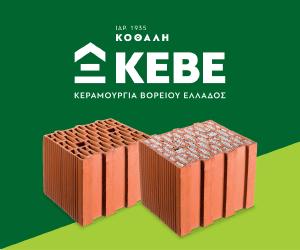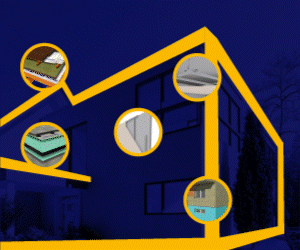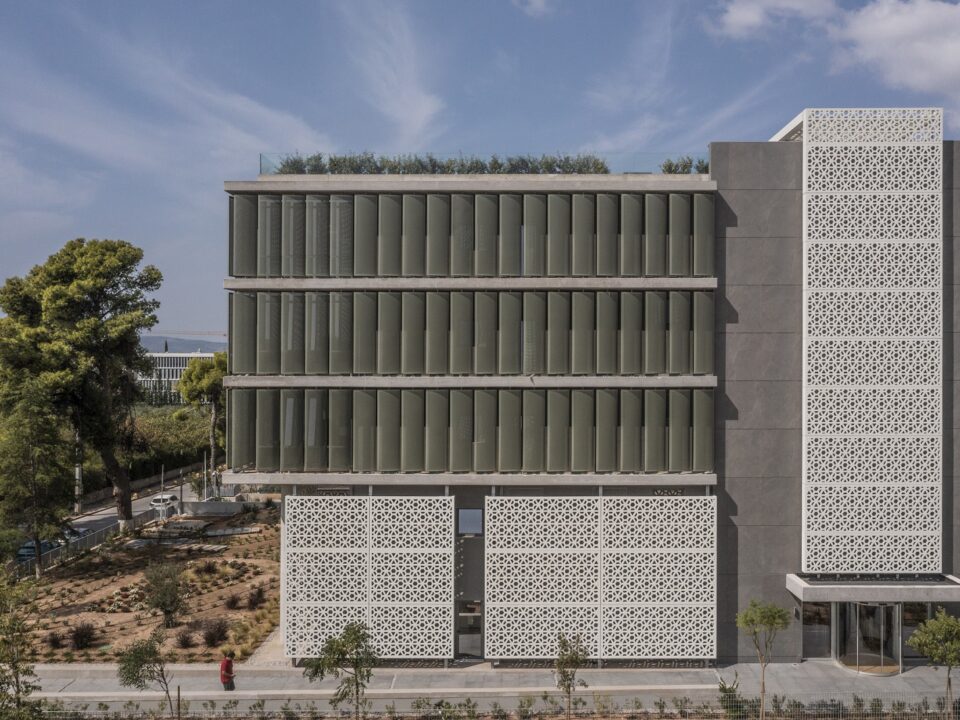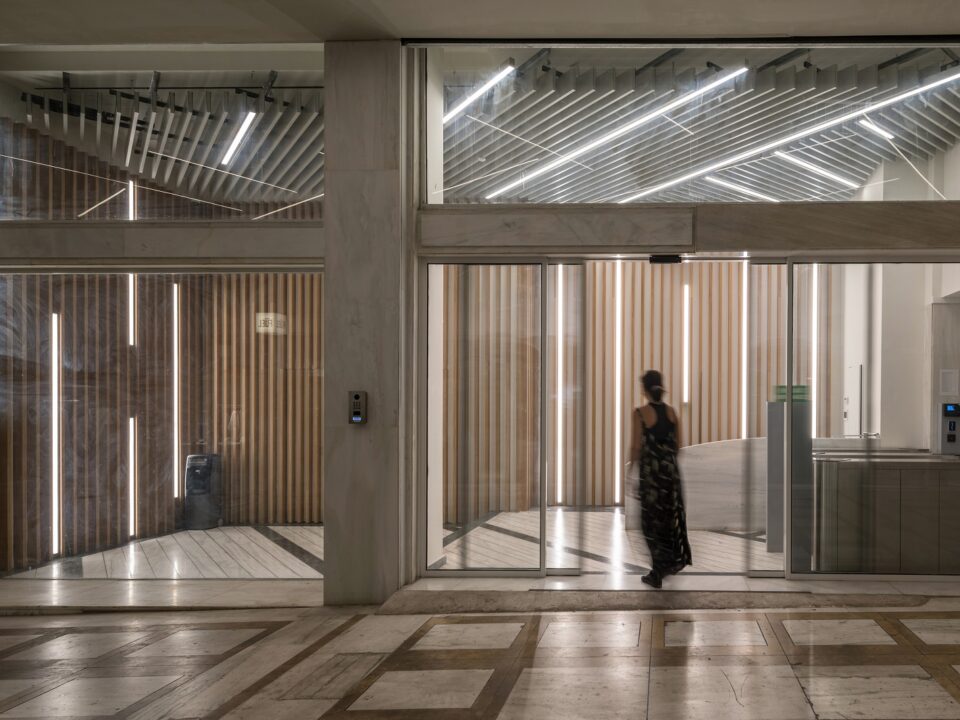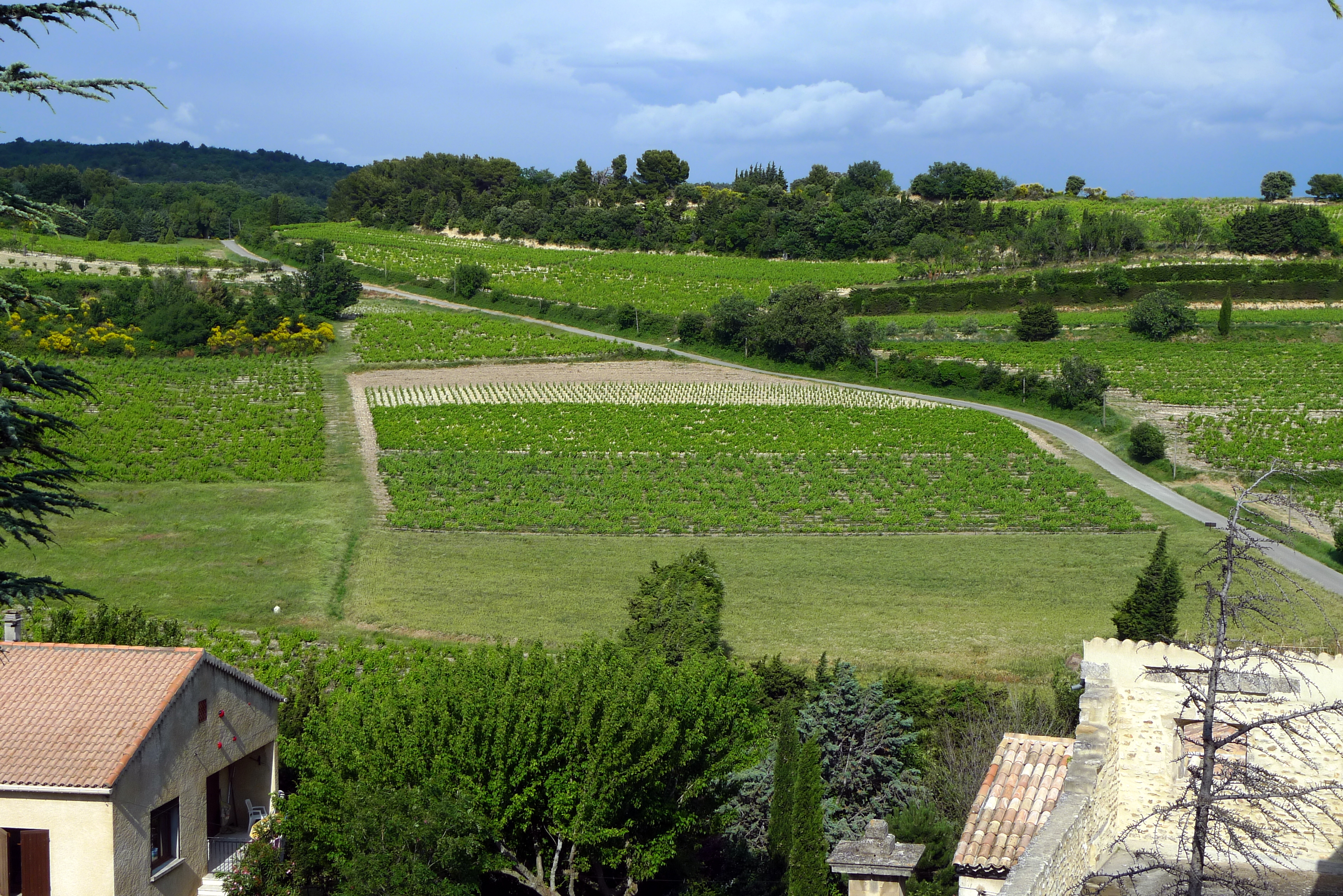
Δασικοί χάρτες – Κτηματολόγιο: Πως επιλύονται προβλήματα σε μπλοκαρισμένες ιδιοκτησίες ακινήτων
26 Απριλίου 2021
WATT+VOLT: Με την «υπηρεσία Chargespot ενισχύει την ηλεκτροκίνηση, το περιβάλλον και τα έσοδα των επιχειρήσεων
27 Απριλίου 2021
Architecture: Bureau de Change Architects, Photo © Gilbert McCarragher
Bureau de Change unveils a new five-storey building with unusual brick facade in Fitzrovia
Located in London’s Fitzrovia – where Riding House Street opens to Wells Street – sits The Interlock, a new five-storey mixed-use building designed by Bureau de Change architects for developer HGG London, a company established to commission design-driven innovative architecture.
Riding House Street hosts an extraordinary breadth of architectural styles. From John Nash’s All Souls church at its most easterly point, the street skips haphazardly from 19th Century terraces to post war commercial buildings; concrete slab structures and 20th Century apartment blocks.
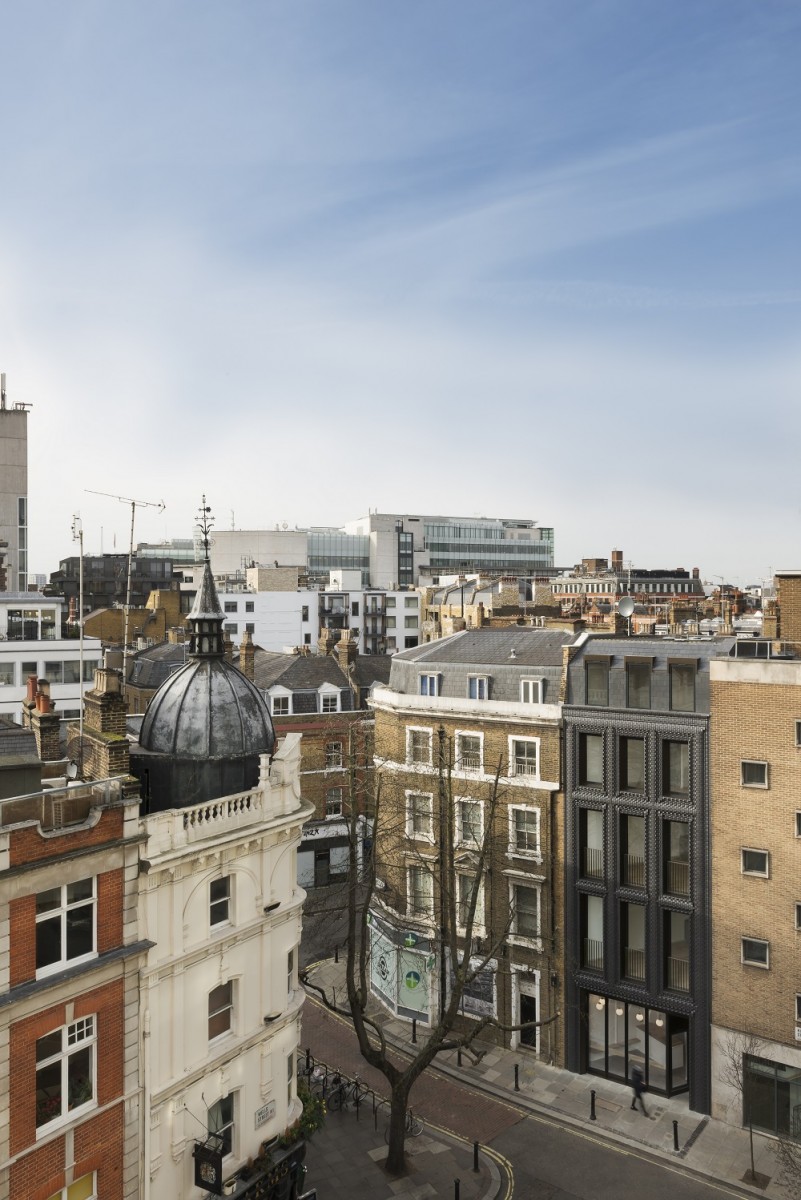
Architecture: Bureau de Change Architects, Photo © Gilbert McCarragher
The street’s piecemeal aesthetic is unified by the use of brickwork which serves as the façade material of choice, at times so abundant that it forms the road surface.
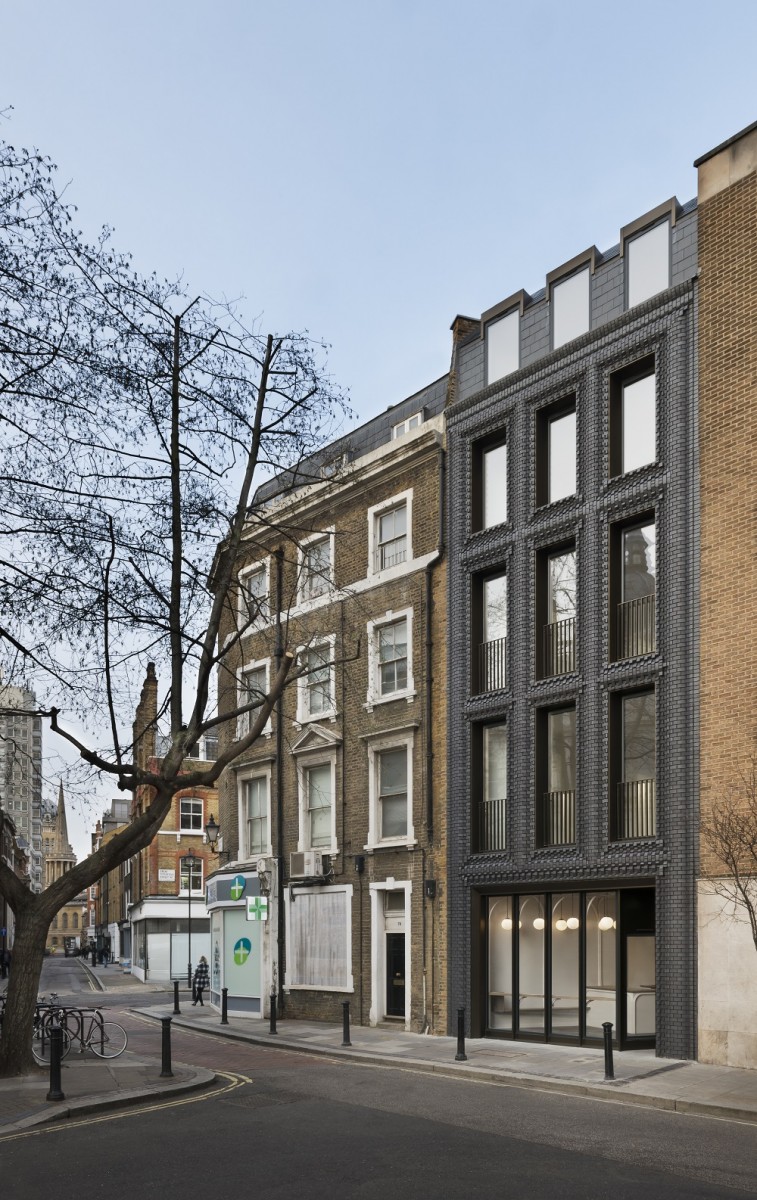
Architecture: Bureau de Change Architects, Photo © Gilbert McCarragher
The Interlock absorbs this history and responds by taking the proportions of the neighboring 19th century terrace, and recasting its brick façade to create a building of uncertain heritage – one that is simultaneously historic and contemporary, familiar yet foreign.
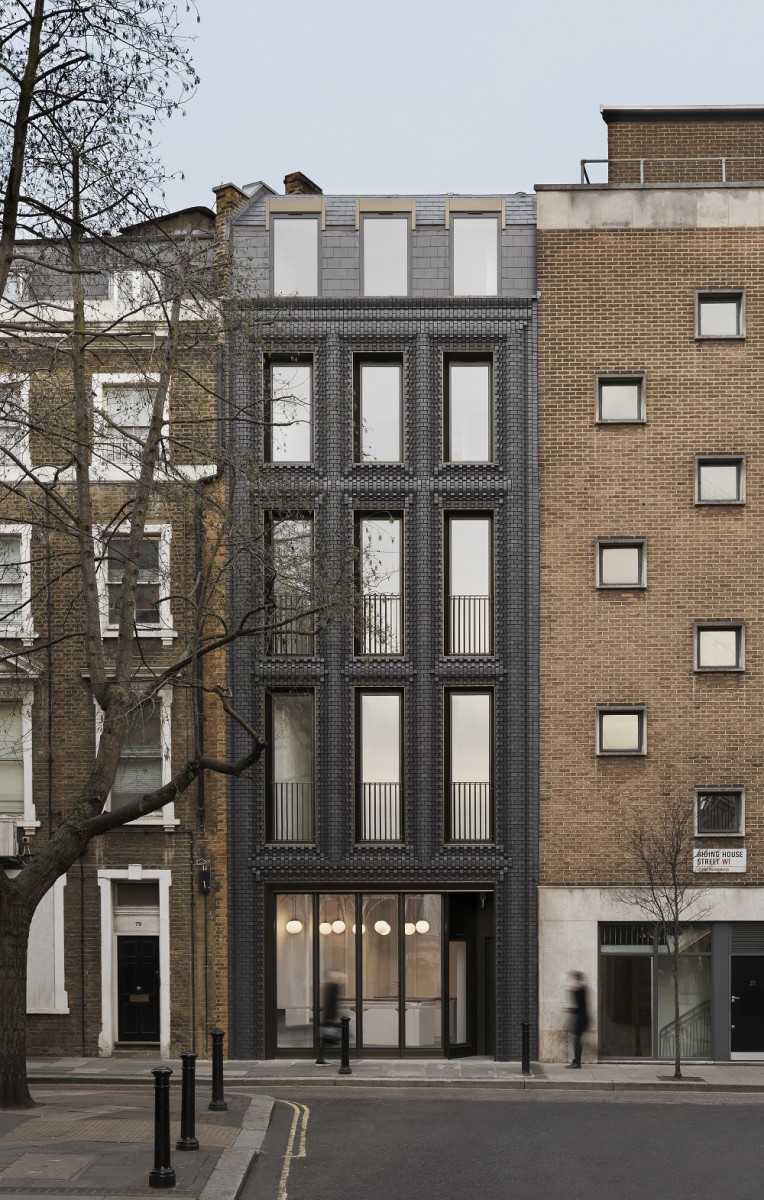
Architecture: Bureau de Change Architects, Photo © Gilbert McCarragher
“Abandoning the traditional dimensions of London brick, a collection of 44 misshapen and seemingly un-stackable clay blocks were developed”.
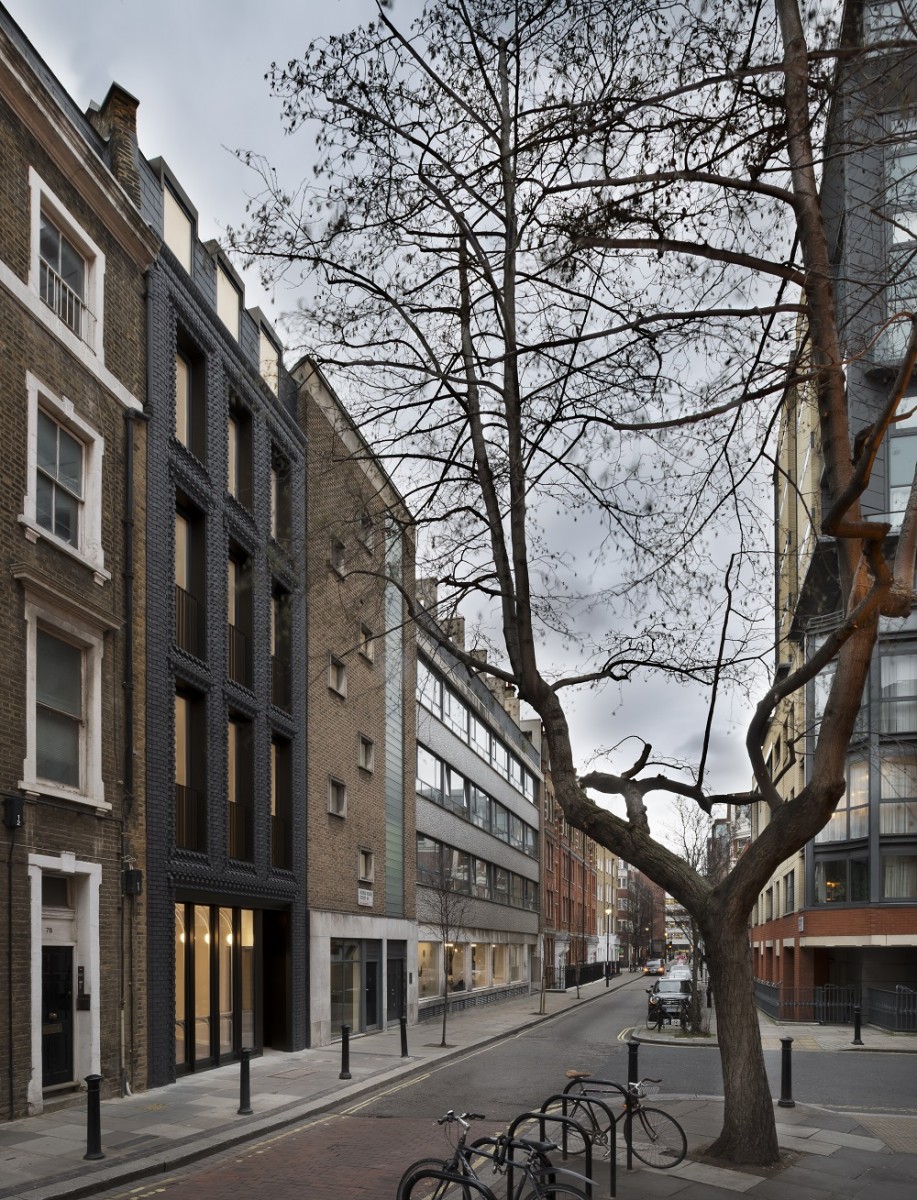
Architecture: Bureau de Change Architects, Photo © Gilbert McCarragher
Co-founder and Director of Bureau de Change Katerina Dionysopoulou said: “We were interested in taking these very traditional proportions and in some way subverting it – like a puzzle box that seems familiar and reveals a hidden complexity that increases the more you interact with it”.
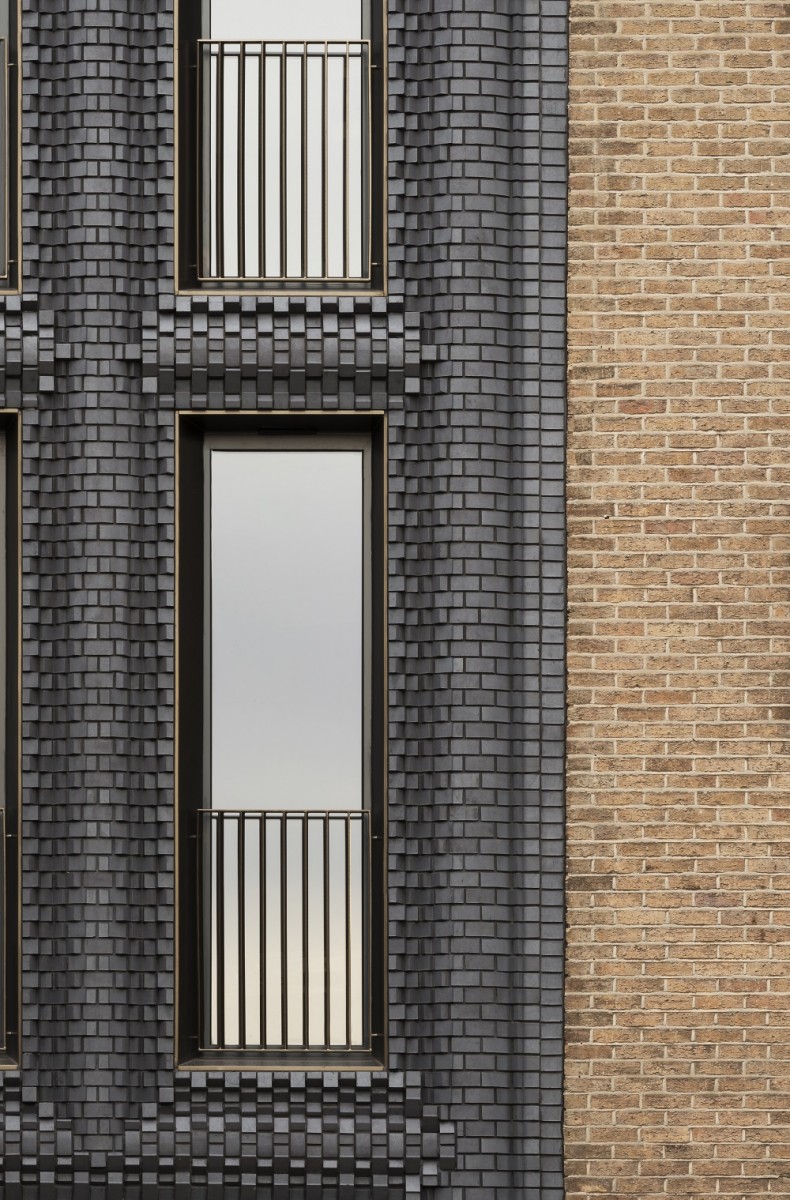
Architecture: Bureau de Change Architects, Photo © Gilbert McCarragher
“The patterns visible across the surface are informed, in part, by the interactions between materials and structure”.
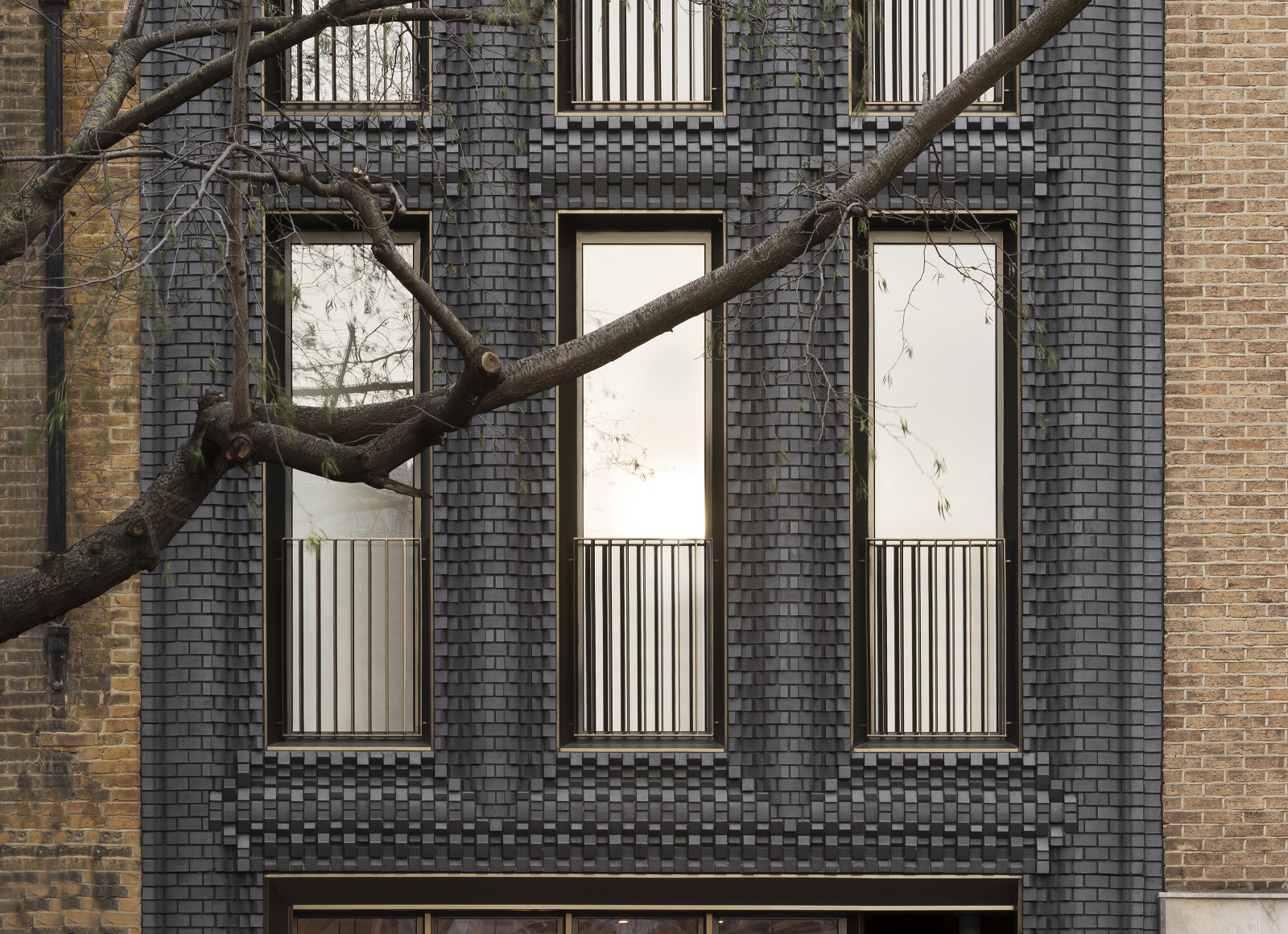
Architecture: Bureau de Change Architects, Photo © Gilbert McCarragher
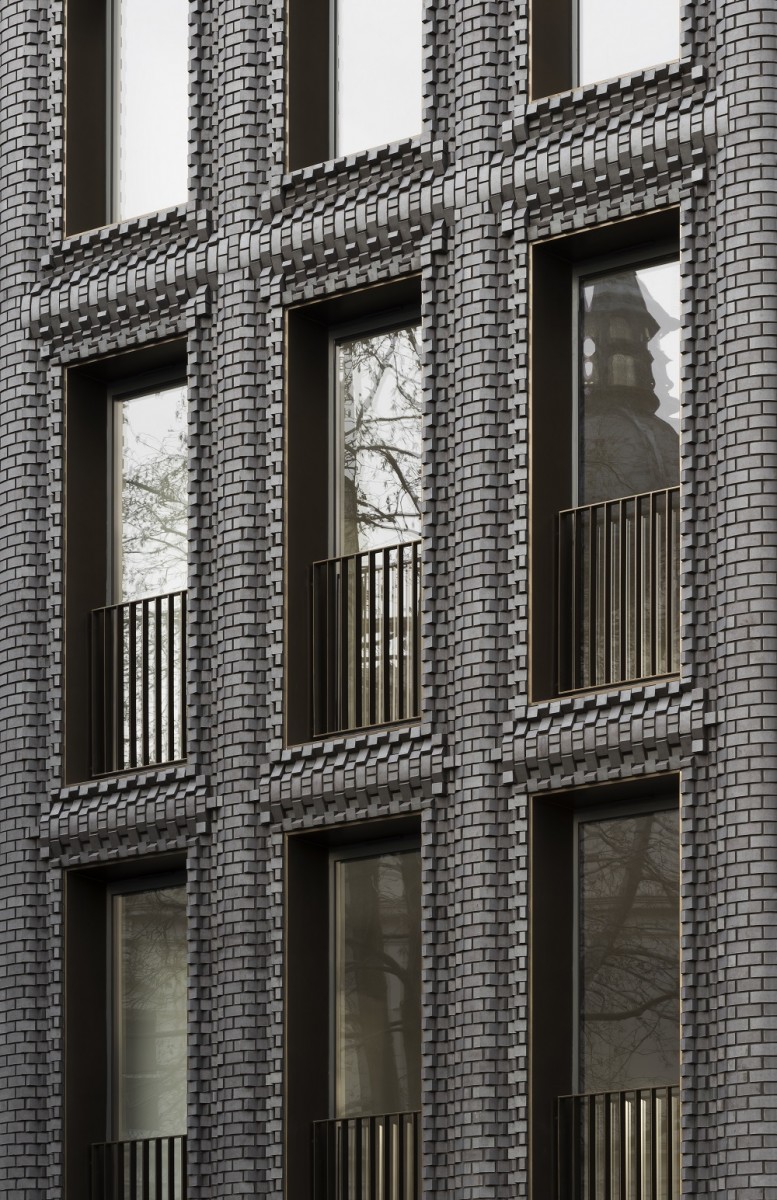
Architecture: Bureau de Change Architects, Photo © Gilbert McCarragher
The bricks appear to lap up against glazing, swell and bow between floors and are inset frame-like to denote the building’s perimeter. For passers-by, the bricks appear to morph and twist like cogs. By modelling the facade in 3D, each facet could be individually adjusted to meet structural and fabrication requirements without diluting the integrity of the surface form.
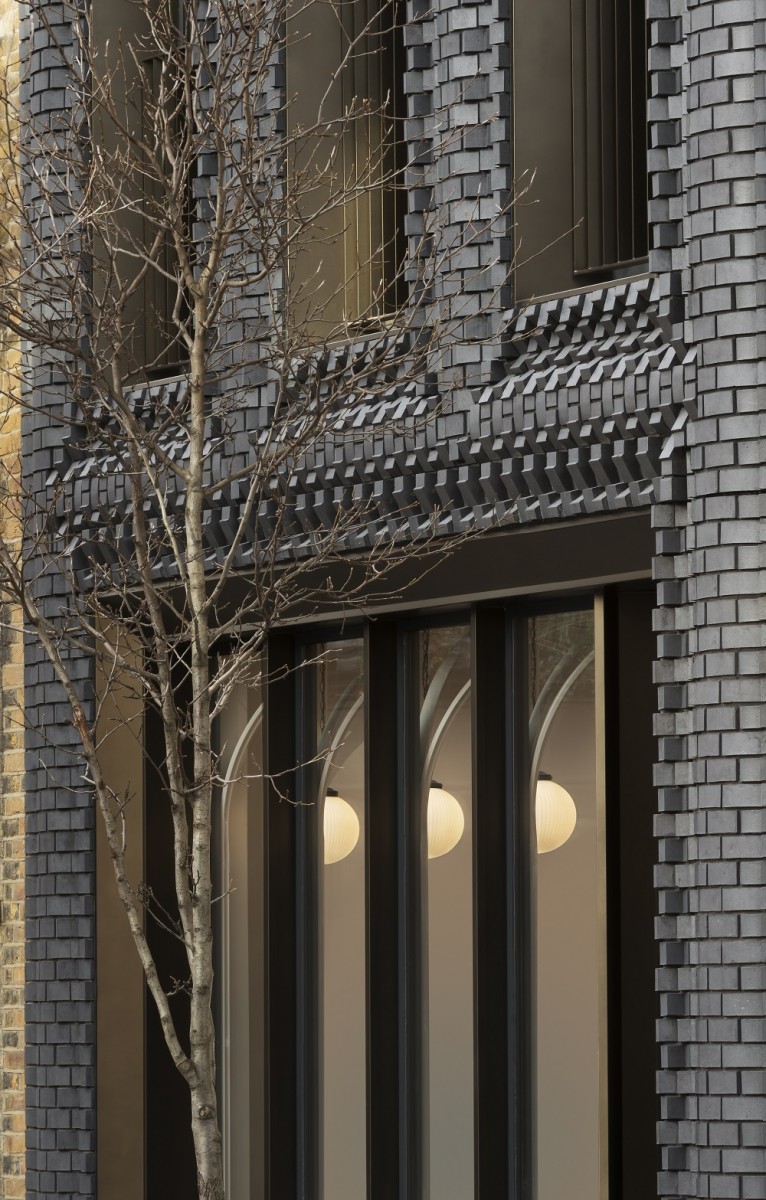
Architecture: Bureau de Change Architects, Photo © Gilbert McCarragher
“Staffordshire Blue Clay was selected as a contrast to the areas existing brickwork”.
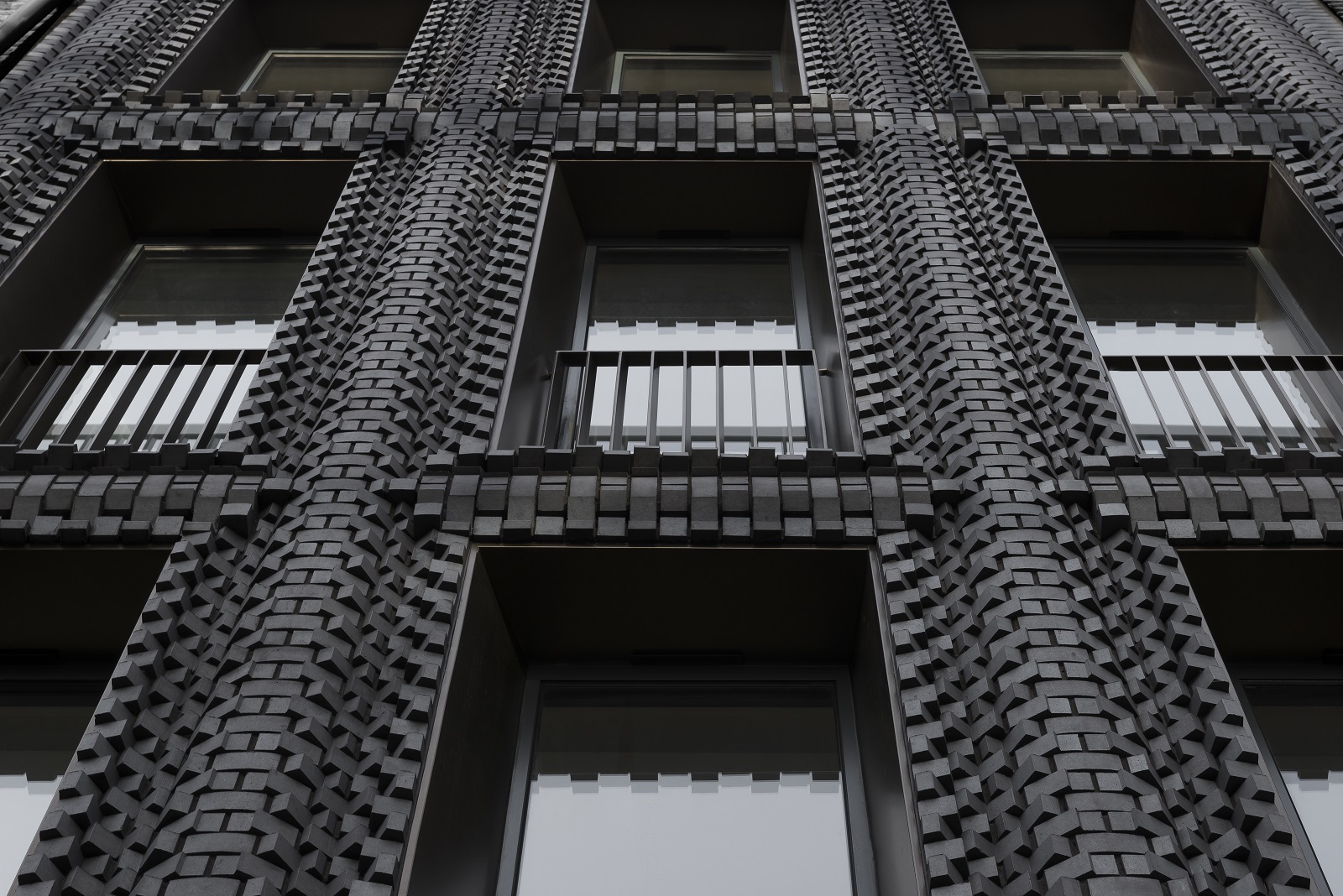
Architecture: Bureau de Change Architects, Photo © Gilbert McCarragher
The marl clay was set into 14 hand-crafted steel molds and fired in oxidation to create the matt blue finish. After firing, these 14 ‘parent’ bricks were divided to form the 30 ‘offspring’. Construction of the 5,000 block landscape took place over three months.
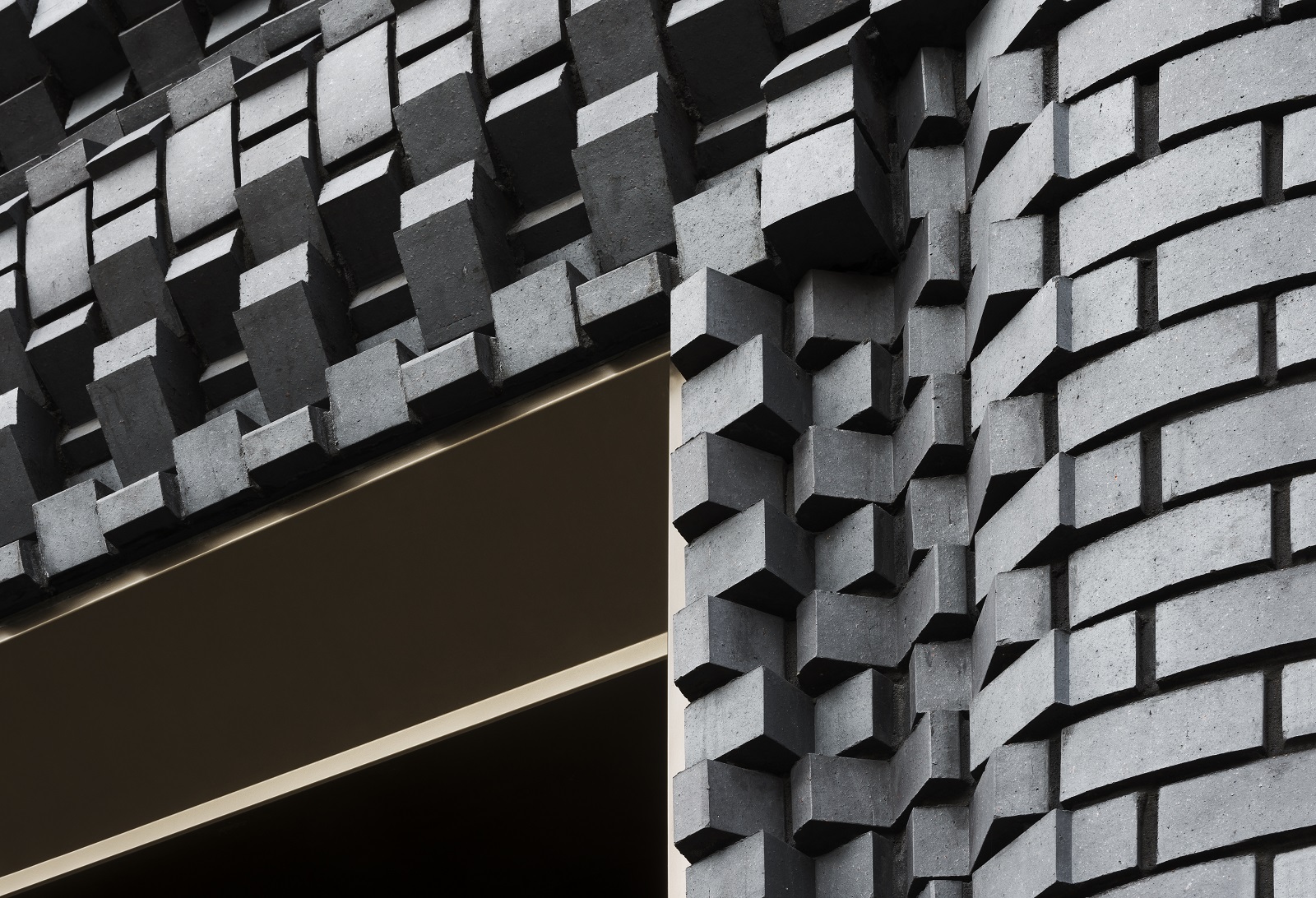
Architecture: Bureau de Change Architects, Photo © Gilbert McCarragher
The fabrication team used 1:1 printed templates that set out the number, typology and location of each brick. When collated on site, these 188 templates appeared like a construction manuscript, with each brick a different note to lay.
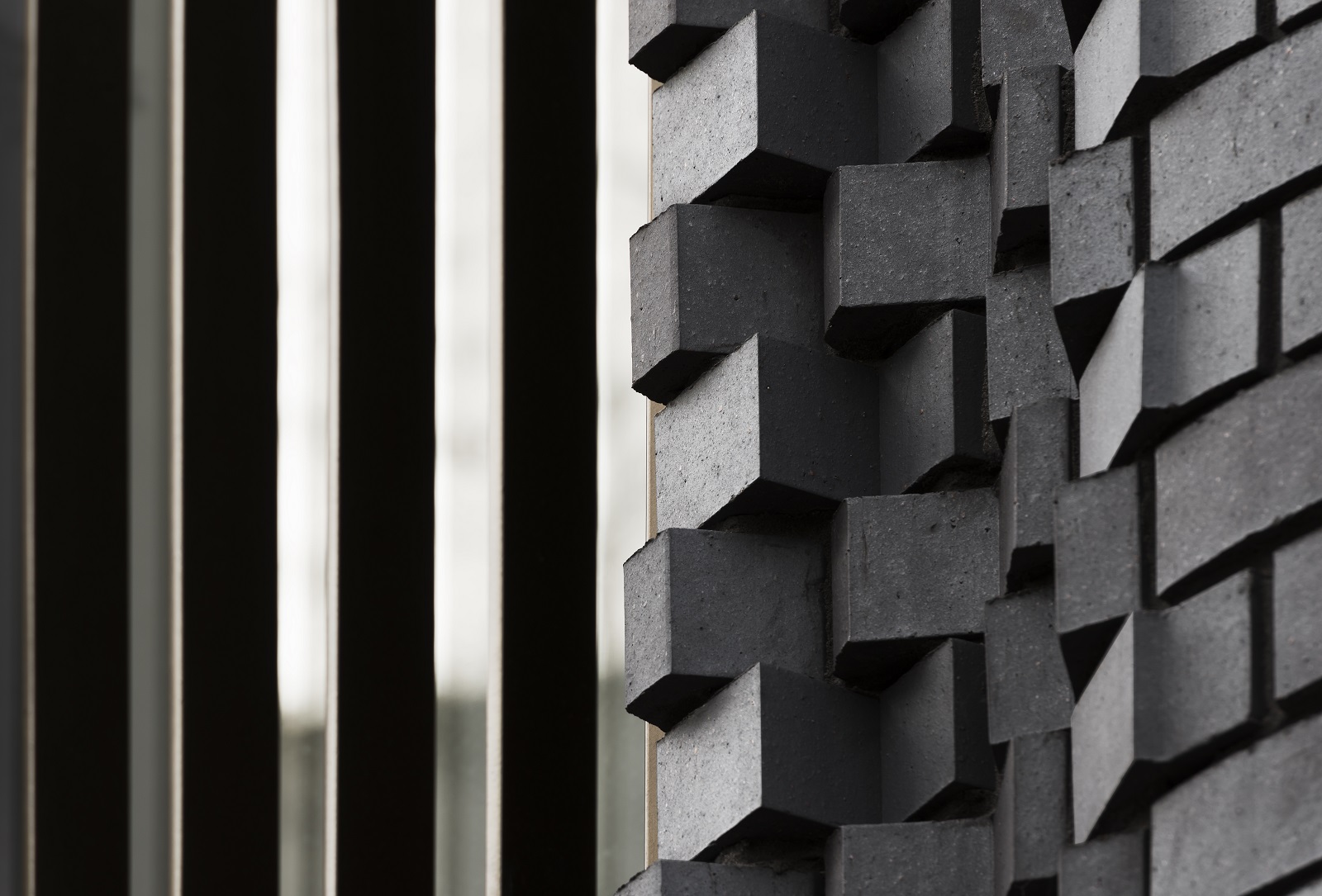
Architecture: Bureau de Change Architects, Photo © Gilbert McCarragher
Co-founder and Director of Bureau de Change Billy Mavropoulos explained: “We worked iteratively with the team at Forterra – adapting and reviewing the bricks in 3D. We were walking the line of what would be technically possible, but through this process, found a point that was both buildable and produced the richness and movement we were trying to achieve”.
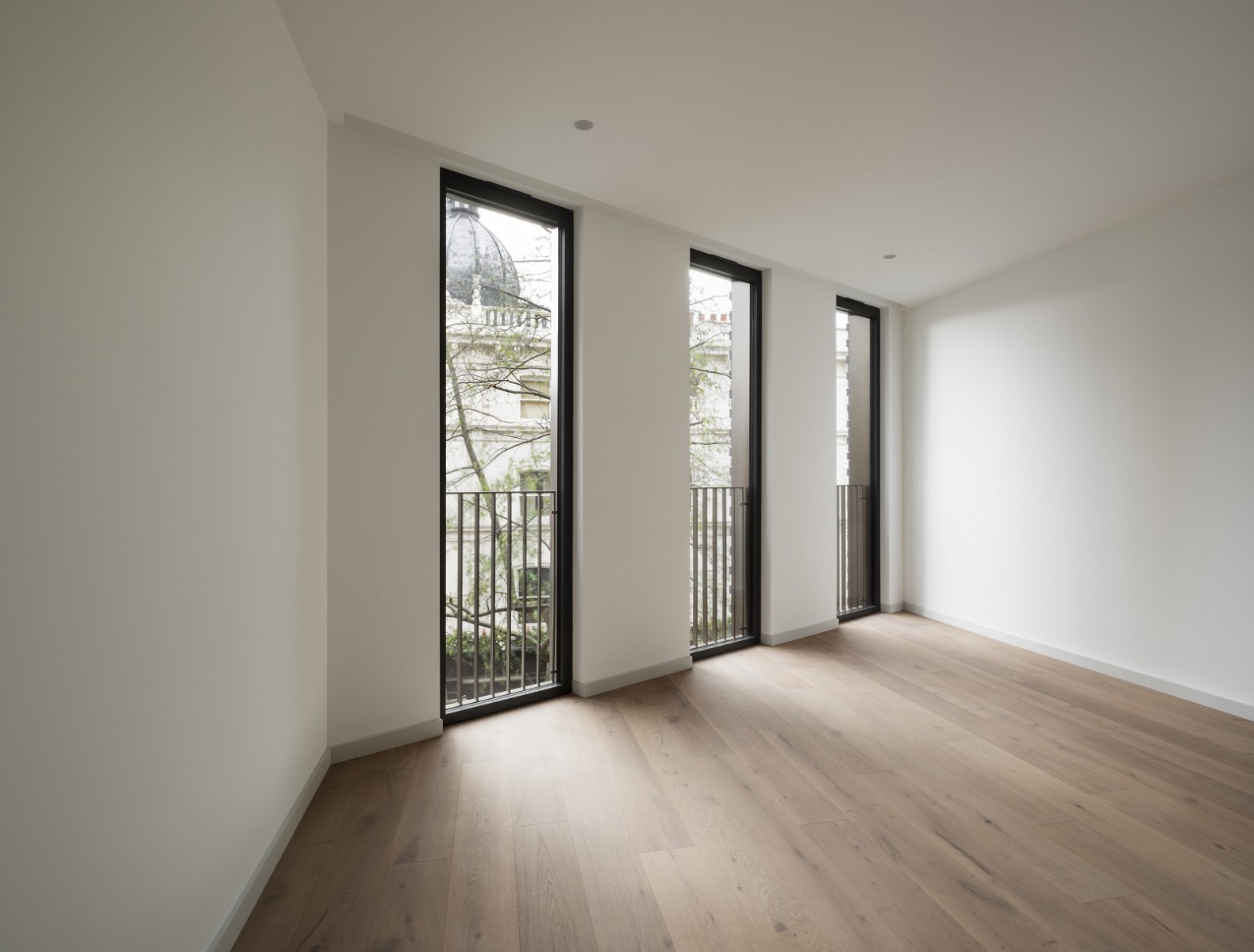
Architecture: Bureau de Change Architects, Photo © Gilbert McCarragher
Behind the façade, sit three new residential units and a café at street level with gallery beneath. The regularity of the façade’s proportion and fenestration belies the complexity of the building’s volume and massing.
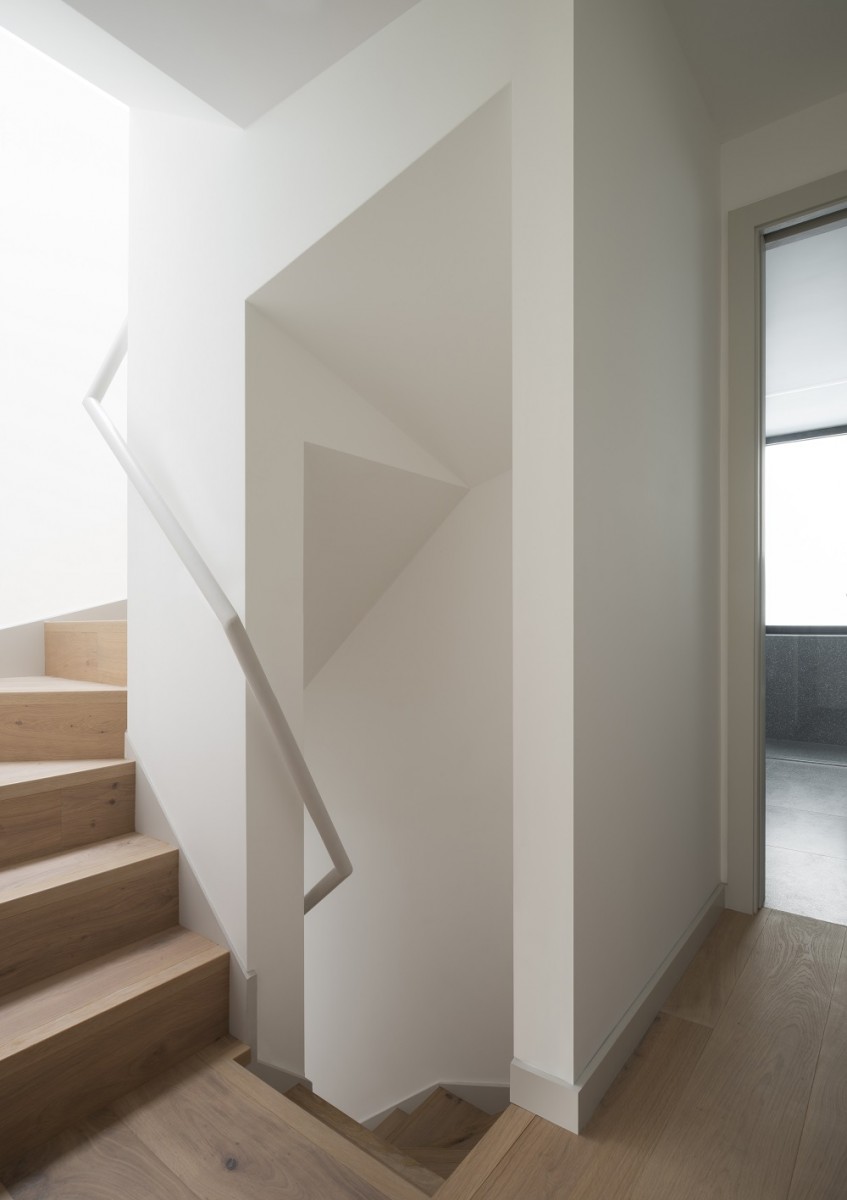
Architecture: Bureau de Change Architects, Photo © Gilbert McCarragher
“At the rear, the building is set out as a series of stacked boxes of varying form and size”.
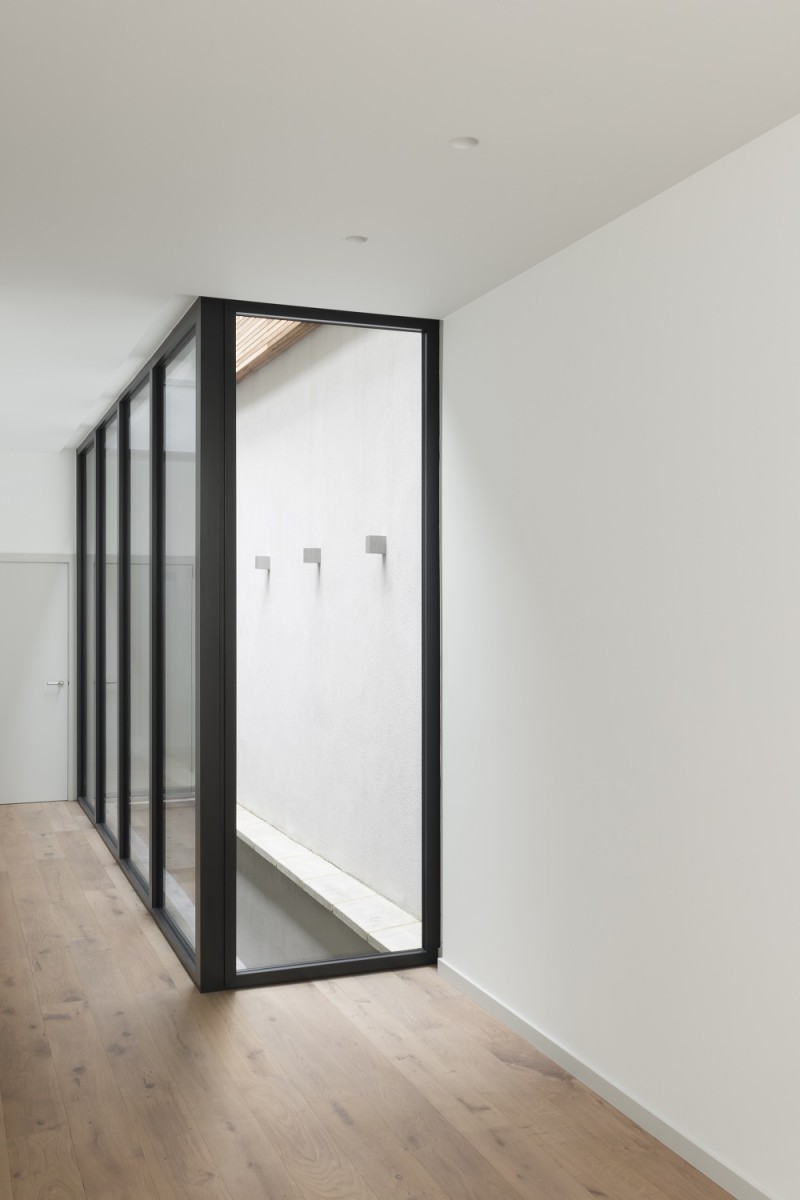
Architecture: Bureau de Change Architects, Photo © Gilbert McCarragher
Each floor is shallower than the last with the deepest floorplan at the bottom and the smallest at the top. Within this stepped form sits a series of deep light wells and skylights that track daylight in to the center and edges of the building, creating internal patios on the lowest floors and light wells on others.
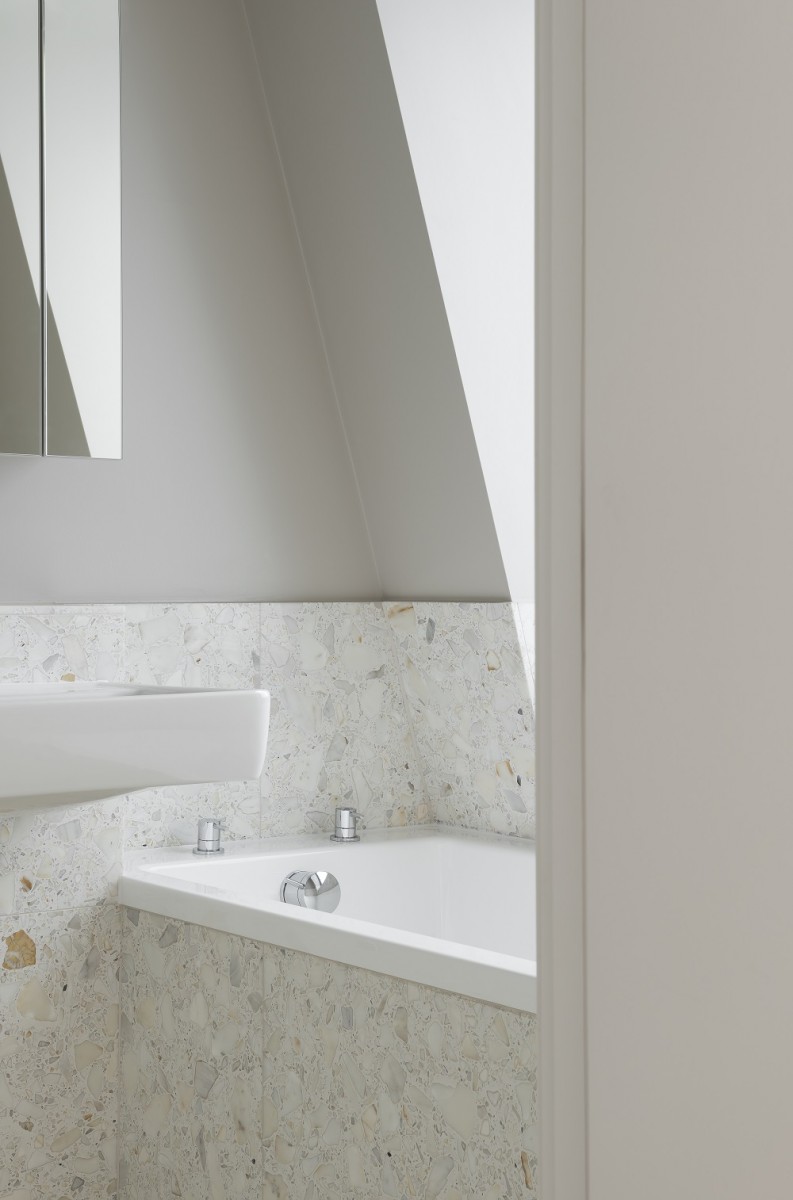
Architecture: Bureau de Change Architects, Photo © Gilbert McCarragher
Facing the street, the rooms overlook the busy street and on higher floors, the rooftops and domes of nearby buildings. At the rear the light is more diffused creating calm in the private spaces. Inside, the units are finished in a simple elemental palette – terrazzo bathrooms, natural stone worktops, sprayed-timber kitchens and oak floors.
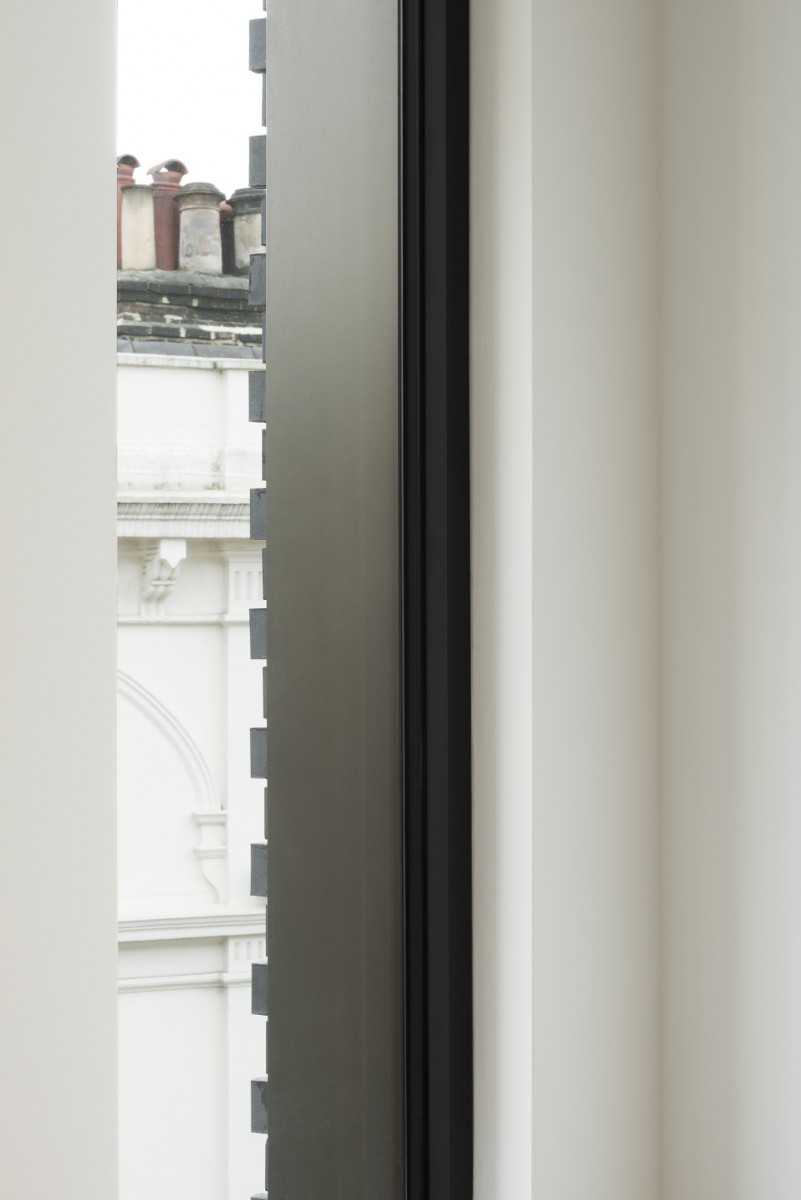
Architecture: Bureau de Change Architects, Photo © Gilbert McCarragher
“The light-filled café at the base of the building offers a counterpoint to the weight and inkiness of the façade”.

Architecture: Bureau de Change Architects, Photo © Gilbert McCarragher
With every surface washed in white, the heavy-set mullions are halved and extruded from their frames to form ribbons that curve and fold over the ceiling in a style reminiscent of ornamental plasterwork. The monochromatic palette is broken only by cuts of oak that line the floor and counter tops.
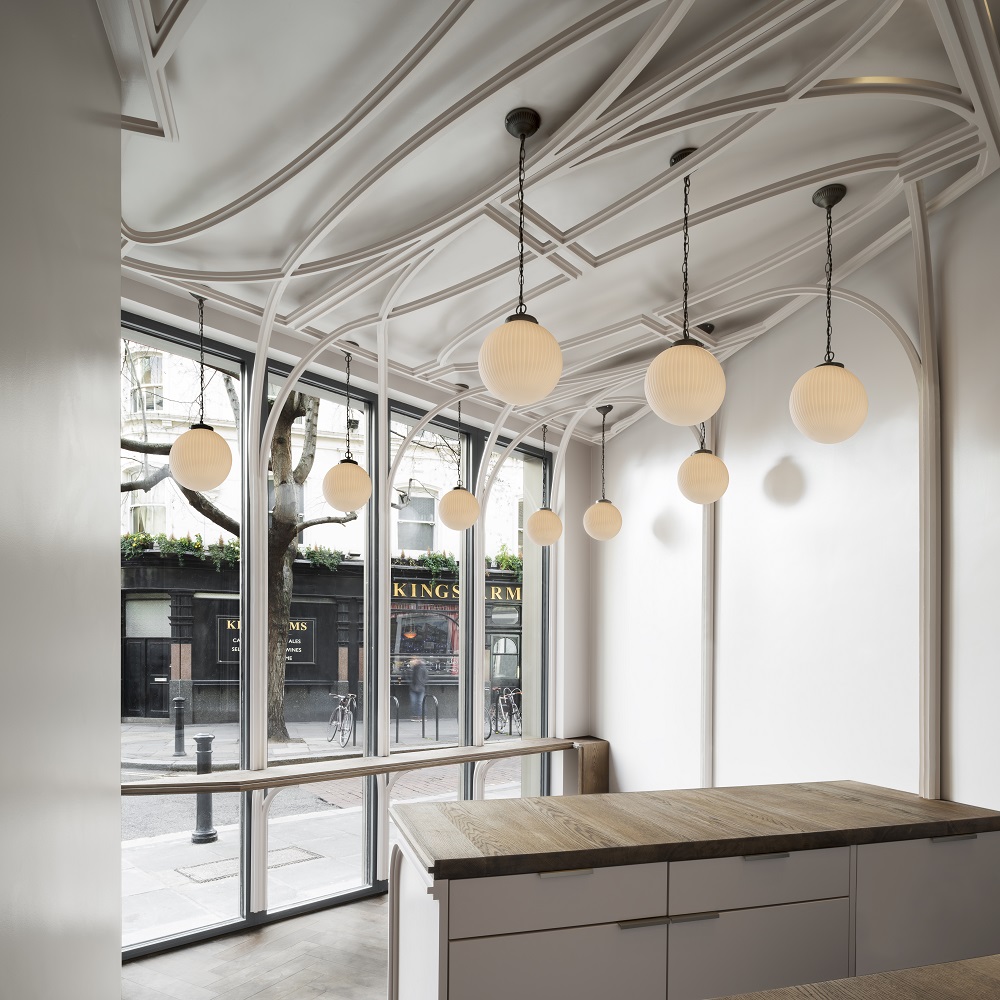
Architecture: Bureau de Change Architects, Photo © Gilbert McCarragher
The floor below the café is a purpose-built gallery space hosting exhibitions, workshops and talks. The project represents a shared vision between developer and architect to taking London’s architecture and re-approaching it in a way that brings something new to the streetscape.
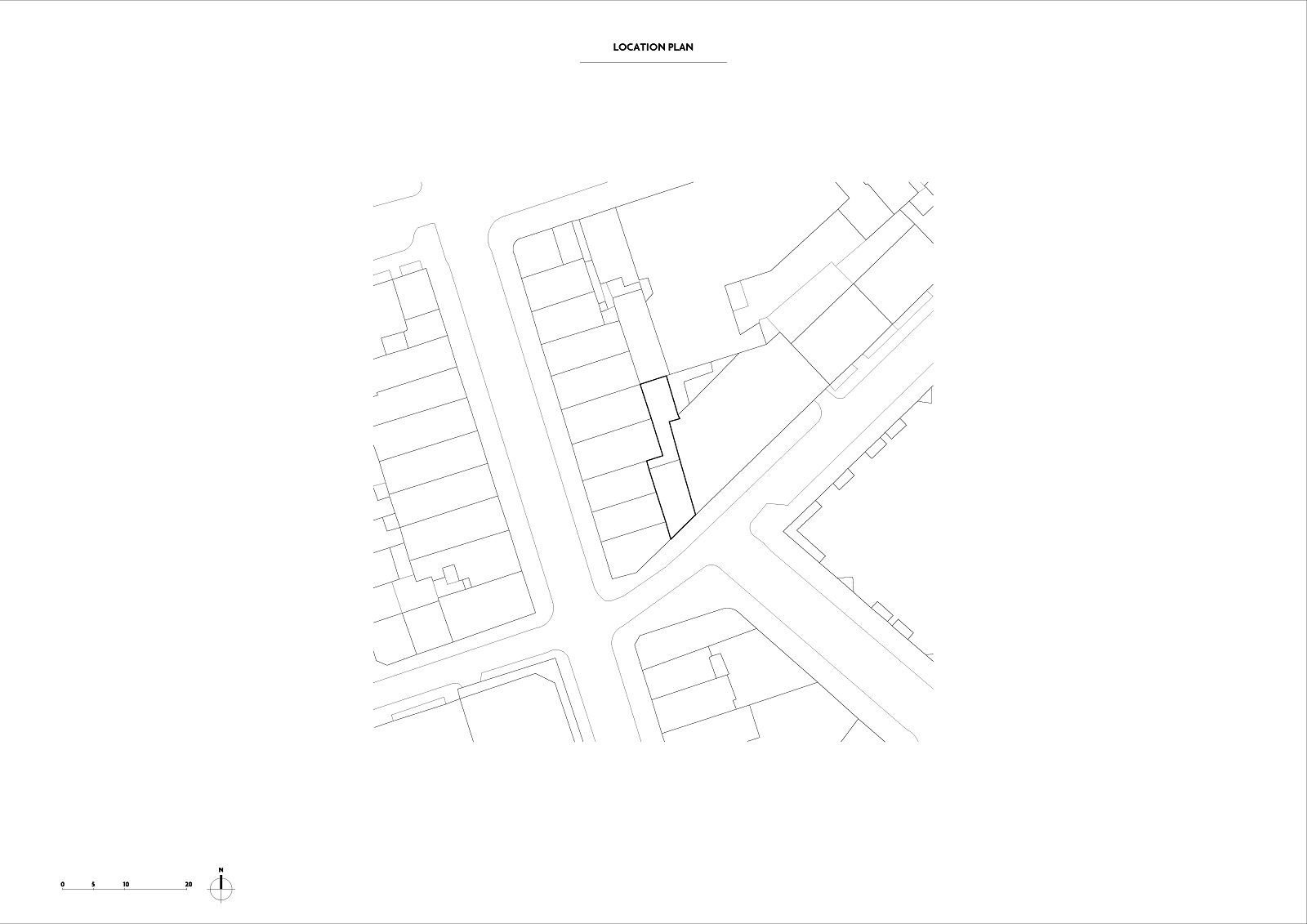
Location plan, © Bureau de Change Architects
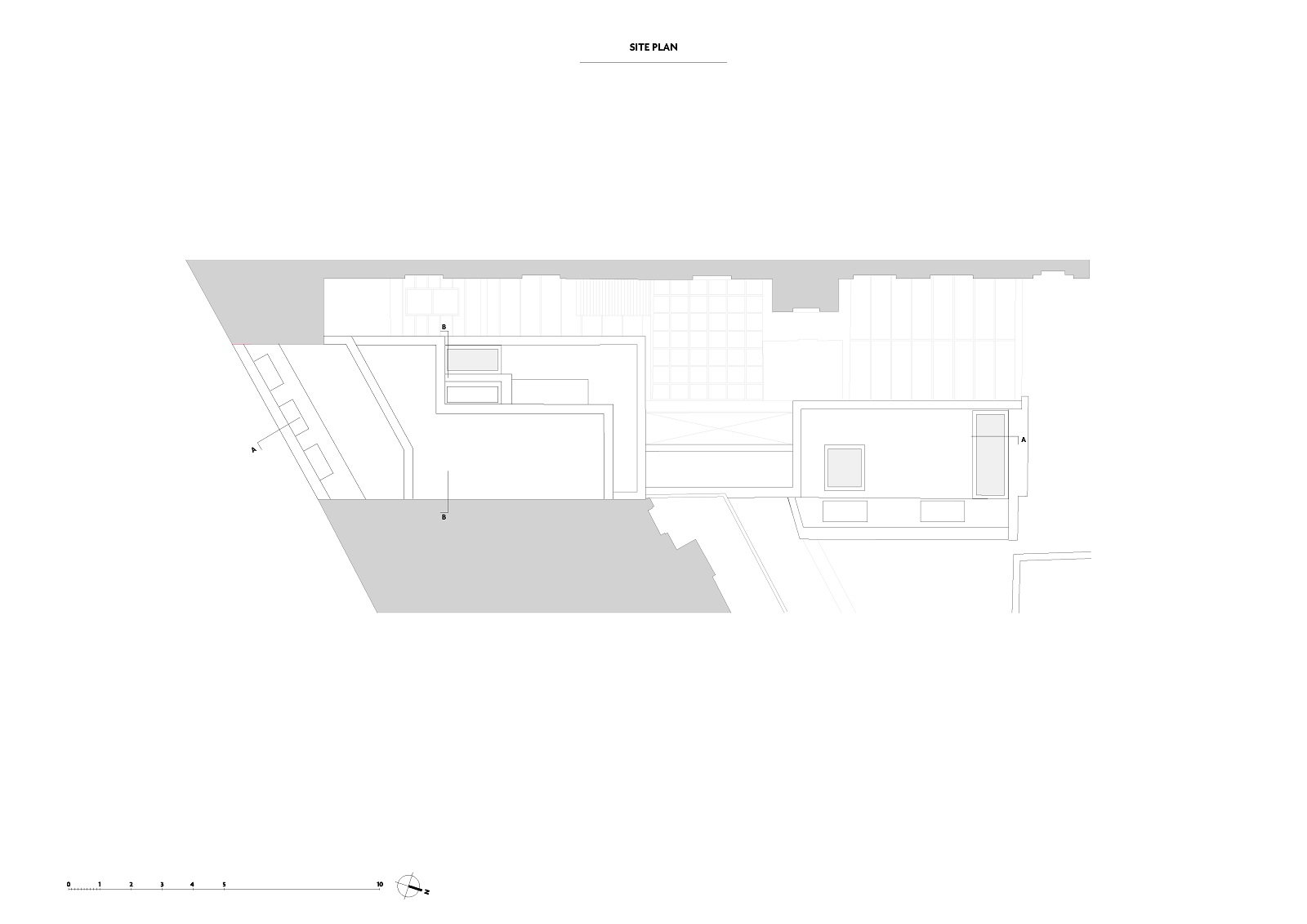
Site plan, © Bureau de Change Architects
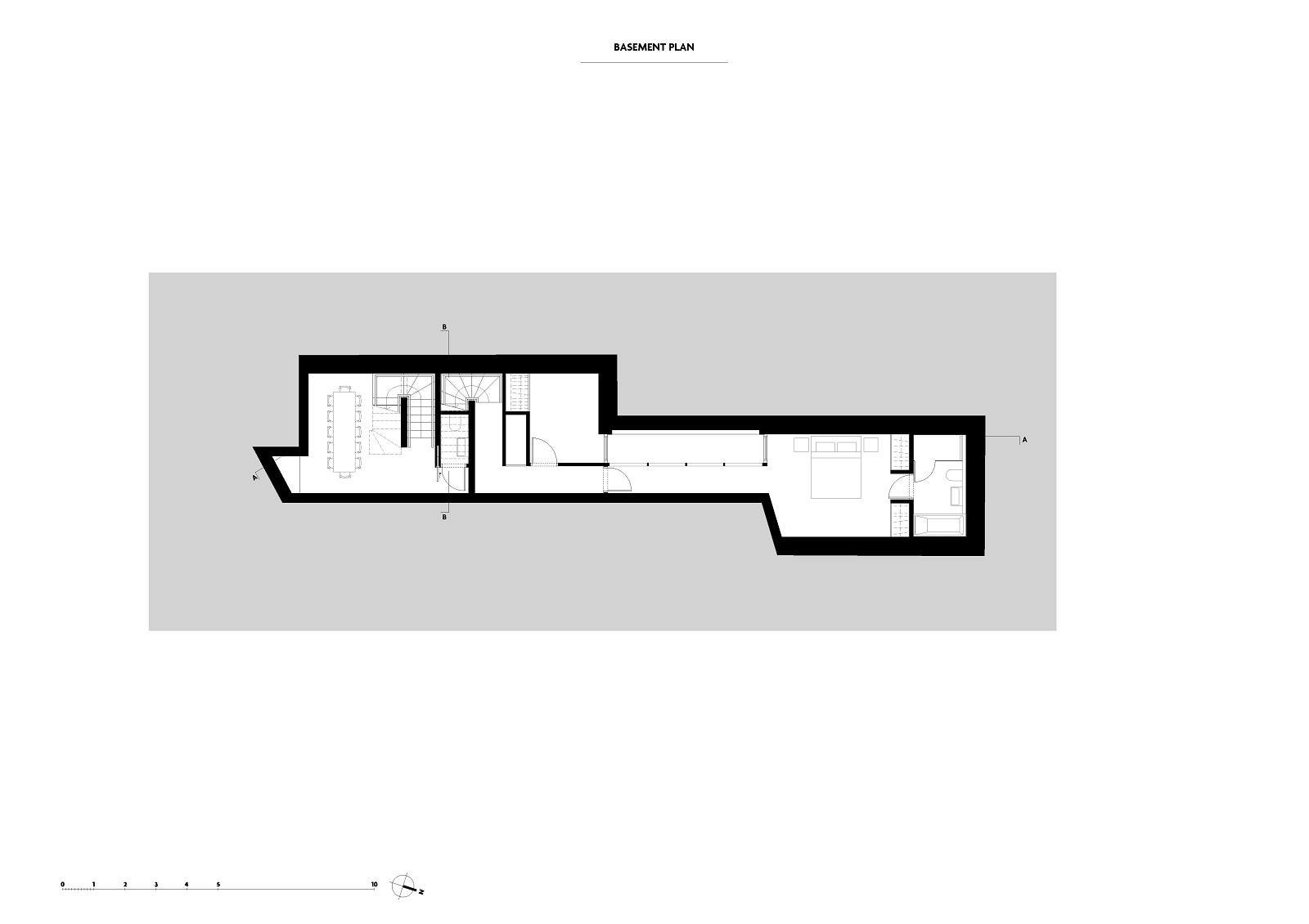
Basement plan, © Bureau de Change Architects
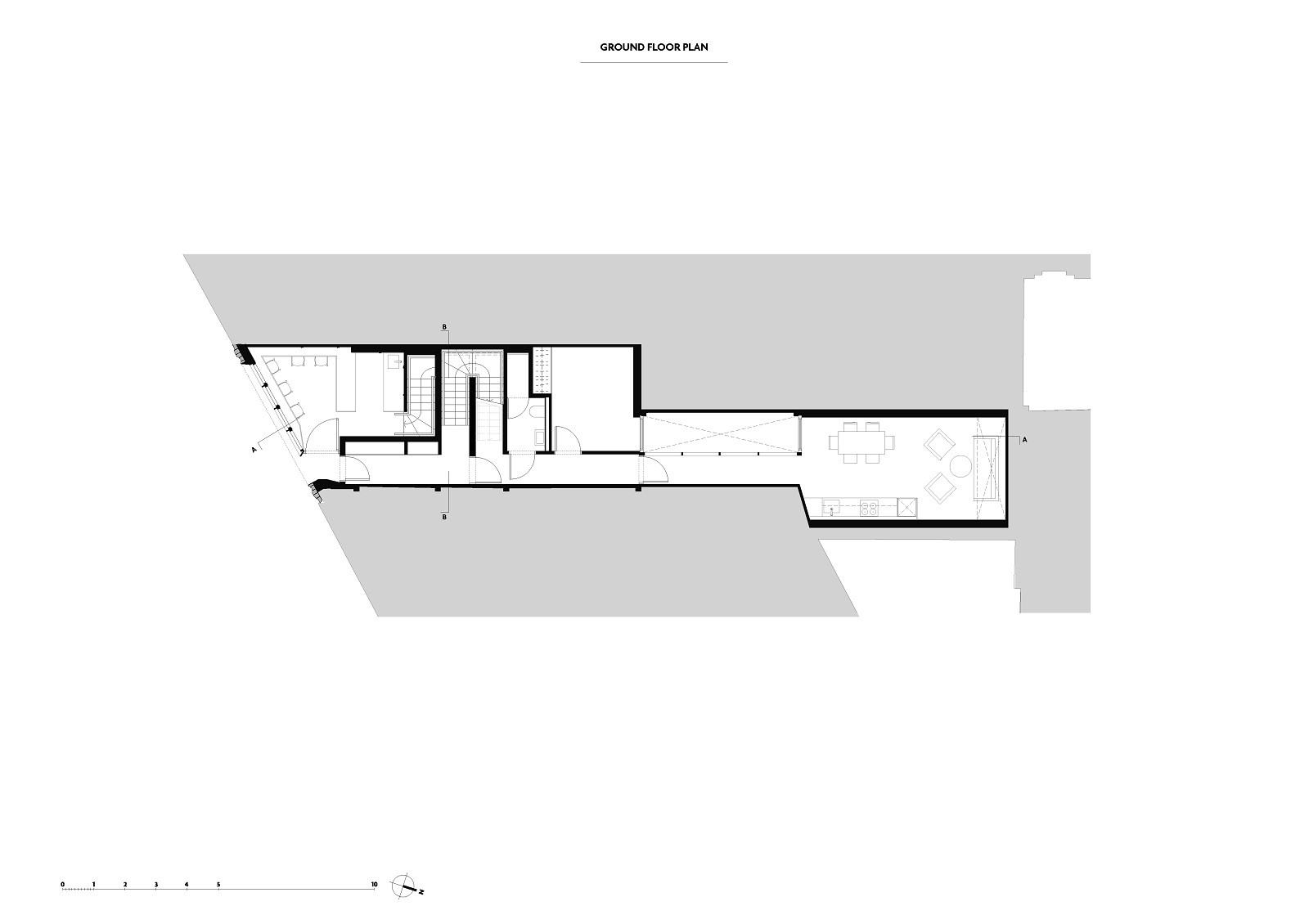
Ground floor plan, © Bureau de Change Architects
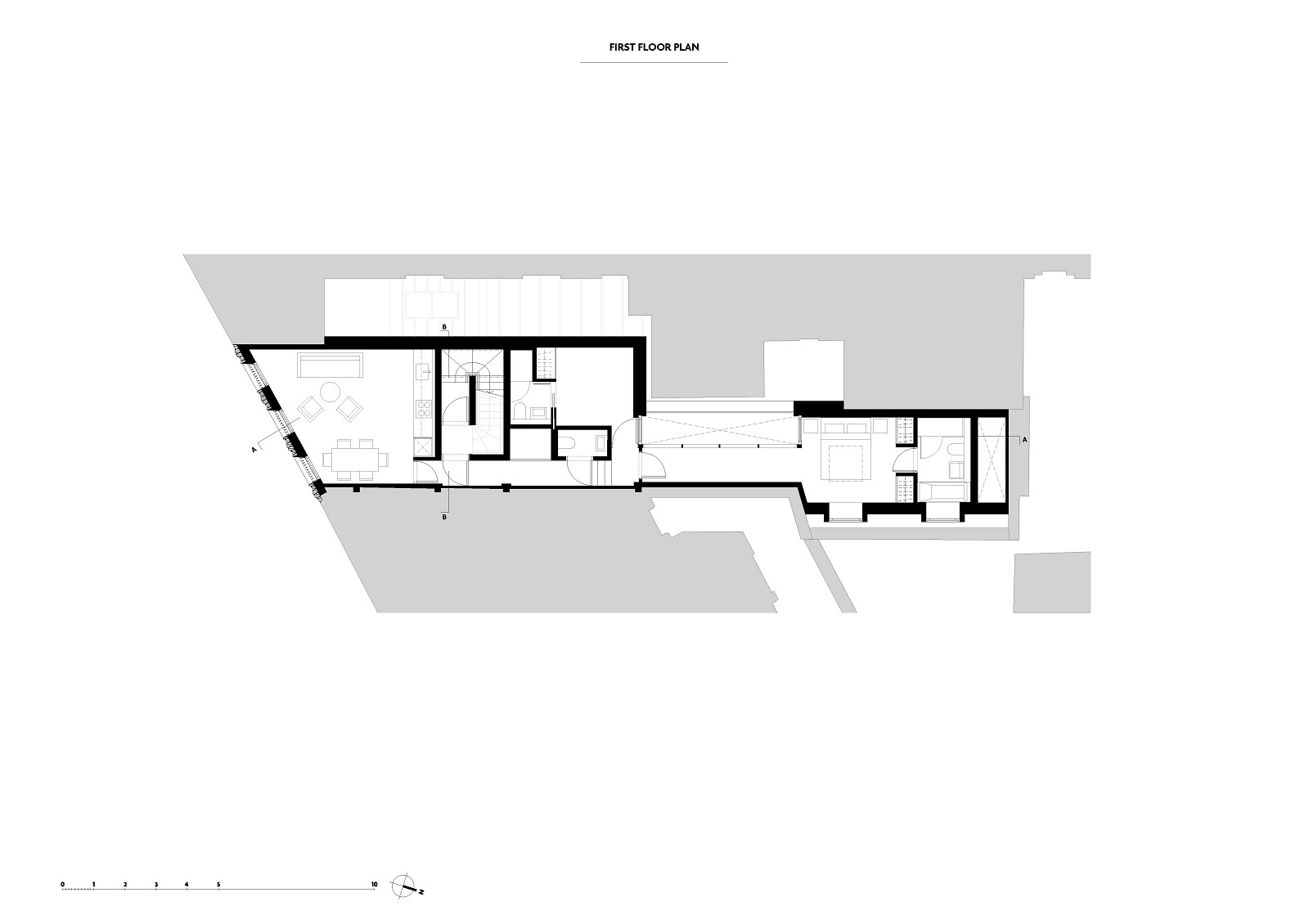
First floor plan, © Bureau de Change Architects
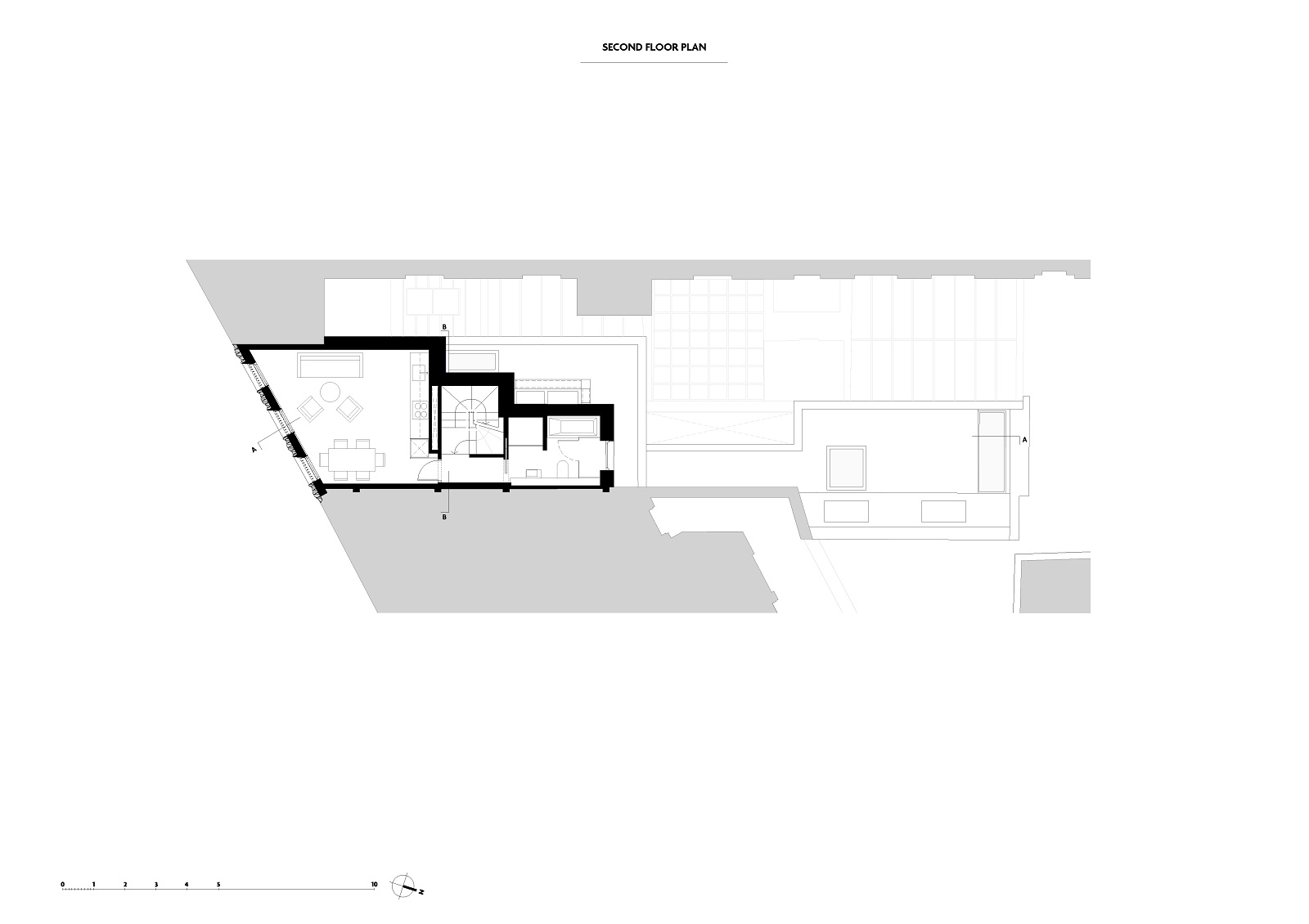
Second floor plan, © Bureau de Change Architects
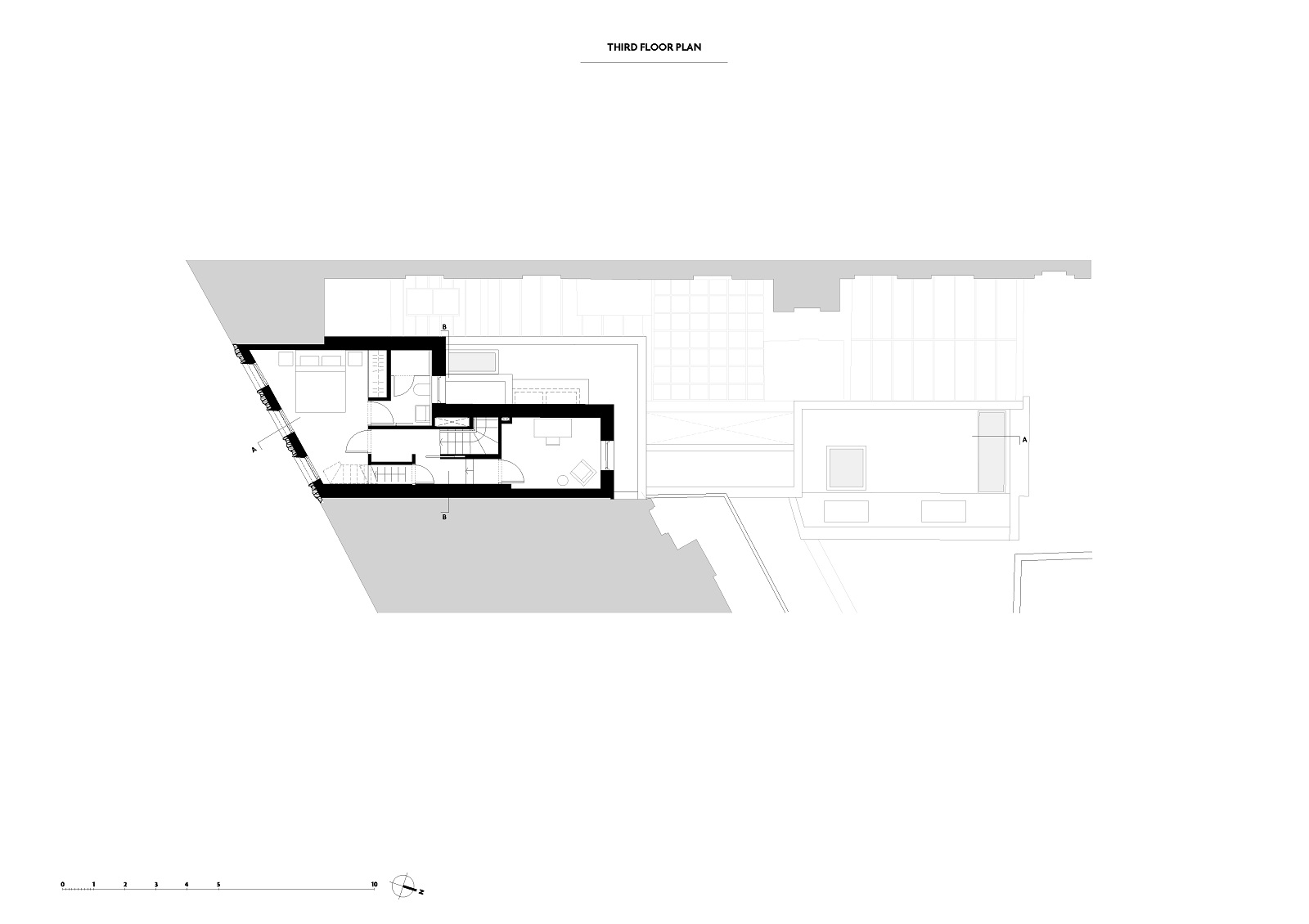
Third floor plan, © Bureau de Change Architects
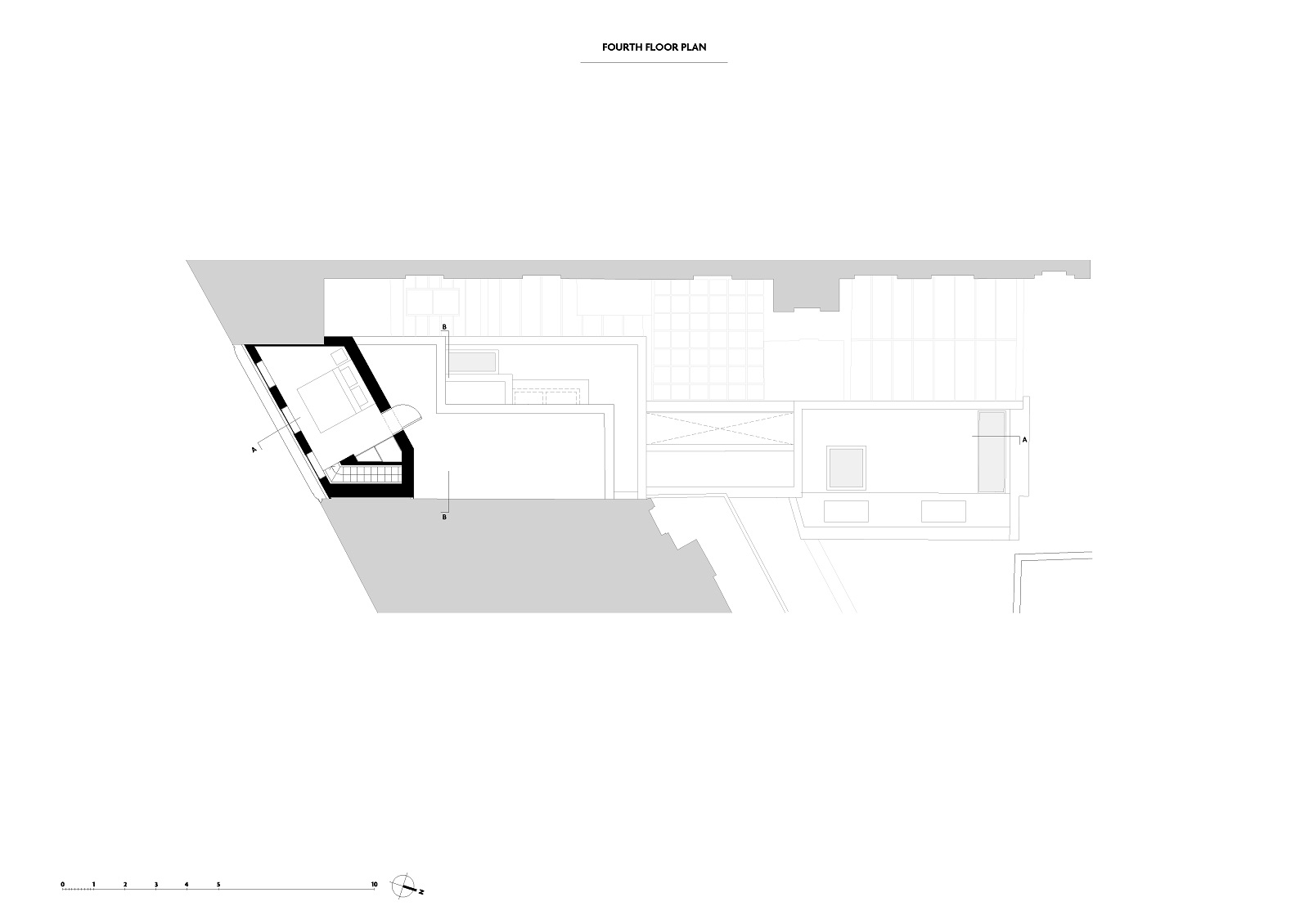
Fourth floor plan, © Bureau de Change Architects
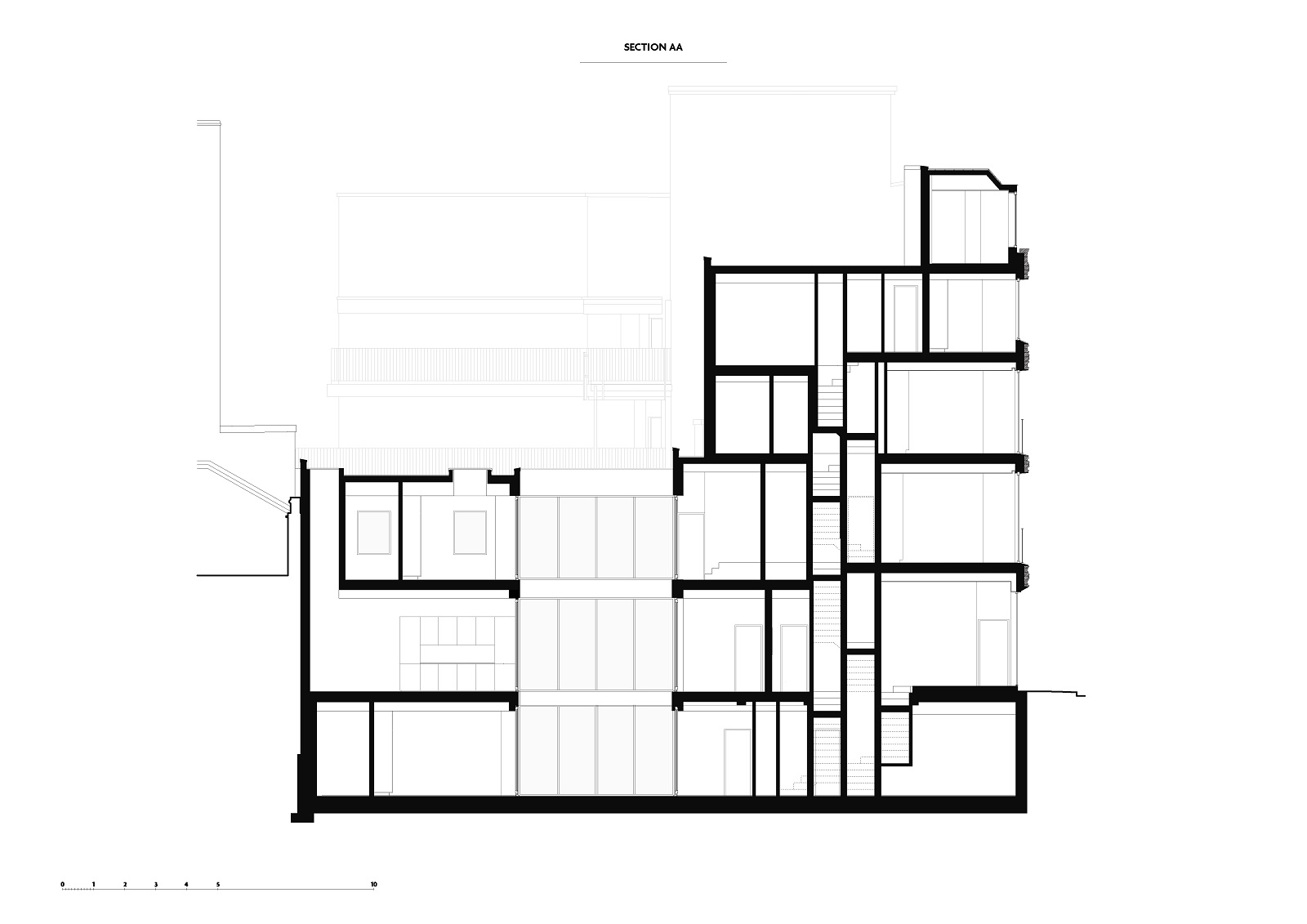
Section A-A, © Bureau de Change Architects
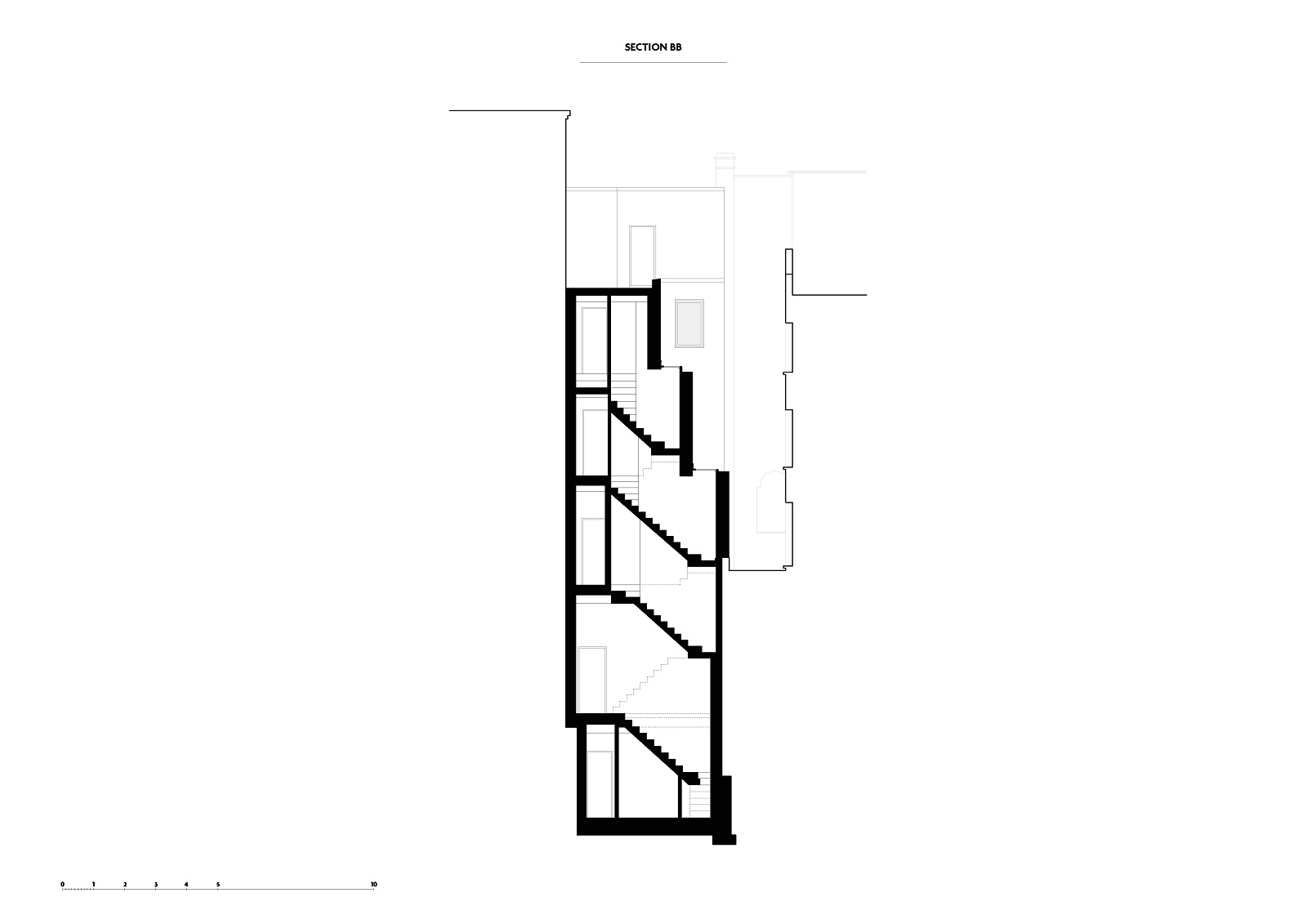
Section B-B, © Bureau de Change Architects
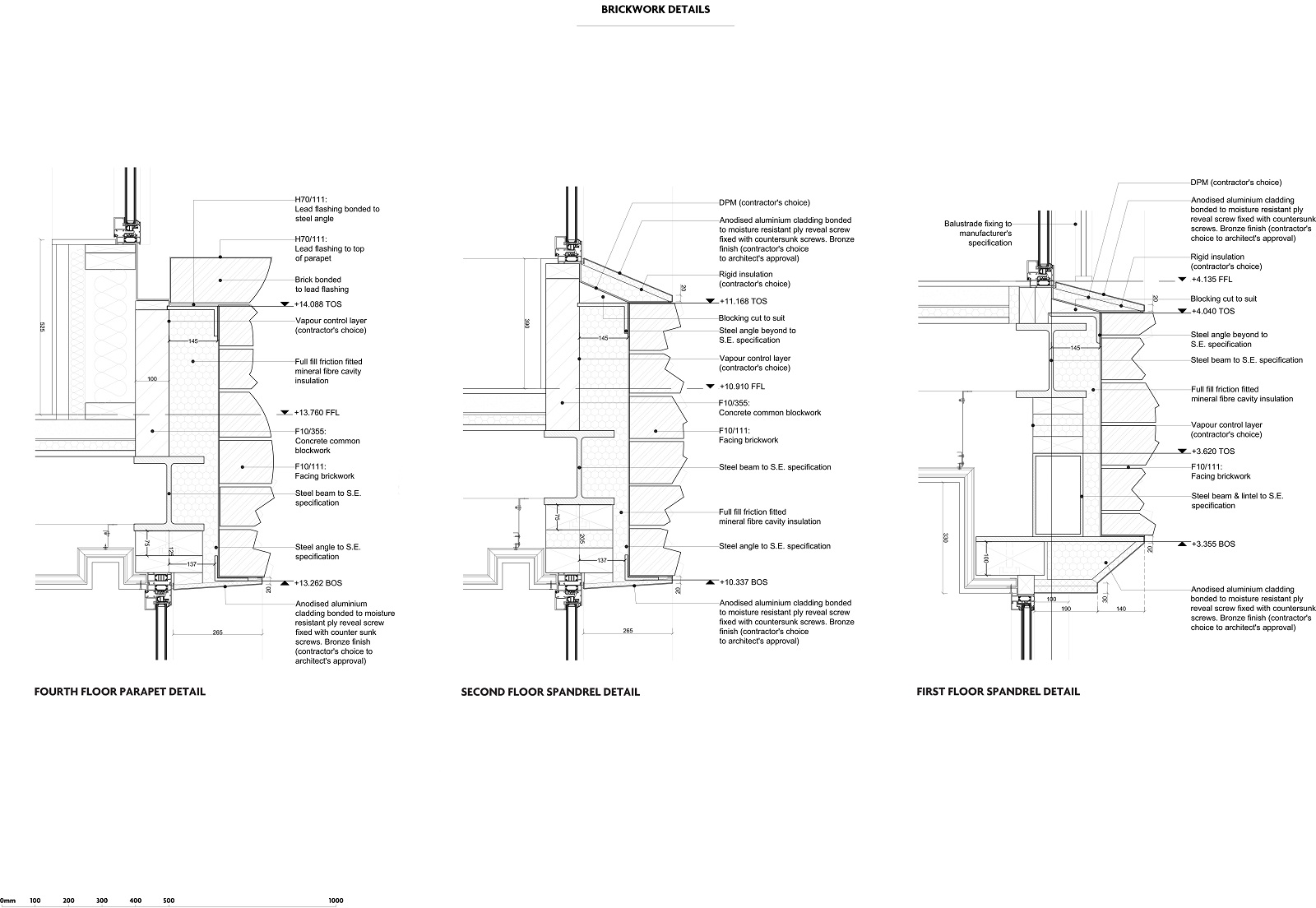
Brickwork details, © Bureau de Change Architects
About Bureau de Change Architects:
Bureau de Change is an award winning architecture practice founded by Katerina Dionysopoulou and Billy Mavropoulos. Its work is a direct product of the founders’ upbringing, passions and experiences – combining the pragmatism and formality of their architectural training with a desire to bring a sense of theatre, playfulness and innovation to the design of spaces, products and environments. The result is a studio where rigorous thinking and analysis are brought to life through prototyping, testing and making.
Facts & Credits:
Project title: The Interlock, Typology: Five-storey mixed-use building, Location: Fitzrovia – London – UK, Client: HGG London, Architecture: Bureau de Change Architects, Structural Engineer: HRW, M&E Engineer: MWL Group, Contractor: Phillip Banks, Facade contractor: Irvine Whitlock, Brick fabricator: Forterra, Text description: Bureau de Change Architects, Photography: Gilbert McCarragher



